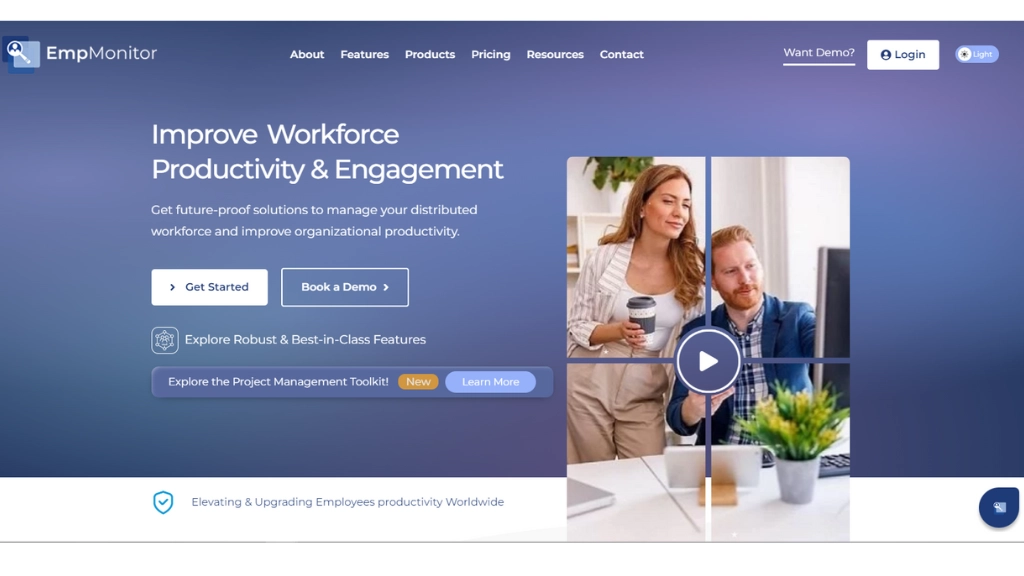If you have not been living under a rock, you must have come across the word remote working. In this digital age, remote collaboration has been the new trend, and this trend will keep rising. Remote work not only provides the flexibility to work from a remote location but enables you to take help from other users in case of urgency, hence boosting efficiency and productivity.
The surge in remote work’s popularity is prompting organizations to reconsider and revamp their work structures to incorporate and adjust to virtual teamwork and collaboration.
Remote work facilitates bridging gaps among team members and allows organizations to access external assistance through freelancing. This eliminates the need for employees to be physically present in the office or workplace.
But when you work with something new, there comes a new set of challenges with it. Remote collaboration is not an all-time win-win situation; sometimes, when not applied and monitored carefully, it can create confusion, and sometimes productivity may also dwindle.
In this blog, we will discuss in detail all the positive and negative aspects of remote work, how to minimize the negative effects, and the processes it involves to achieve it. Additionally, we will explore the integration of essential tools such as remote employee monitoring software and its role in enhancing team efficiency while respecting the employees’ privacy.
Listen To The Podcast Now!
Understanding Remote Collaboration
Remote collaboration refers to the process in which employees, teams, or individuals work together with each other from distinct locations without being physically present at a single location.
It utilizes technology to bridge the gap between different persons and create seamless, smooth communication and coordination by creating a virtual workspace. The functioning of remote work depends upon several key components:
- Communication Tools: Reliable tools like video conferencing, messaging apps, emails, and project management software facilitate real-time interactions and information sharing.
- Internet Connectivity: Stable and high-speed internet connections are essential for seamless communication and access to shared documents or databases.
- Collaboration Platforms: Shared platforms for file storage, document editing, and project tracking enable simultaneous collaboration and access to shared resources.
- Team Dynamics: Effective remote teamwork relies on clear goals, mutual trust, accountability, and a supportive team culture that encourages open communication and cooperation.
- Adaptability and Flexibility: Collaboration thrives when teams adapt to different time zones and work styles and embrace flexible working hours to accommodate diverse team members.
Benefits Of Remote Collaboration
Geographical Flexibility: In remote collaboration, individuals have the freedom to work from any location, breaking the constraints of a specific physical office. They can work from their homes, cafes, different cities, or even different countries. This flexibility breaks down the limitations imposed by traditional office settings, allowing for a workforce that spans various geographical locations. As a result, companies can access talent regardless of individuals’ locations, promoting diversity and inclusivity within their teams.
Enhanced Productivity: Remote collaboration promotes productivity by saving time on commuting, minimizing distractions, and allowing personalized workspaces. These foster focused, efficient work, translating into improved overall performance for individuals and teams.
Work-Life Balance: It promotes work-life balance by offering flexibility in work hours and locations. This empowers individuals to manage personal commitments alongside professional responsibilities, promoting well-being and satisfaction.
Access to Diverse Talent: Virtual collaboration enables access to diverse talent globally, disregarding geographical boundaries. This broad talent pool enriches teams with varied perspectives, skills, and expertise, fostering innovation and creativity within organizations.
Cost Savings: Remote partnership leads to cost savings by eliminating expenses tied to physical office spaces, such as rent and utilities. Additionally, it reduces commuting costs and overhead expenses, optimizing resource allocation for individuals and businesses alike.
Challenges Of Remote Collaboration
Communication Hurdles: Diverse time zones, language barriers, and reliance on digital communication channels often introduce challenges, potentially leading to misunderstandings and communication gaps among remote teams. These hurdles can hinder seamless collaboration, causing delays, confusion, and reduced efficiency.
Isolation and Disconnect: Remote work may foster feelings of isolation, hindering team bonding and diminishing the sense of belonging to a cohesive team. This isolation can impede collaboration, reduce morale, and impact overall team dynamics negatively.
Technology Issues: In remote work, dependence on technology exposes teams to potential technical glitches, internet connectivity issues, and reliance on trustworthy digital tools. These challenges can disrupt the seamless flow of remote operations and impact overall productivity.
Difficulty in Team Coordination: Coordinating tasks, aligning schedules, and ensuring everyone is on the same page becomes more challenging in a dispersed team. However, with employee monitoring software like EmpMonitor, you can monitor individual and team project progress and enhance coordination.
Maintaining Accountability: Ensuring accountability and tracking progress in remote work settings without direct oversight presents challenges. Without robust systems and trust-building measures, maintaining alignment and productivity becomes intricate, potentially impacting team cohesion and overall progress.
#8 Tips For Successful Remote Collaboration
Transition to remote isn’t merely a response to external circumstances; it represents a fundamental shift in how teams connect, communicate, and create value. Remote collaboration isn’t always easy, but using the right tools and frameworks will set you on the right path. Some key elements to keep in focus, which are crucial for successful virtual collaboration and increasing remote employee engagement, are mentioned below:
#1 Clear Communication: Effective and transparent communication is the essence of successful remote working. Utilize various communication channels, clarify expectations, and ensure everyone understands their goals and tasks clearly.
#2 Defined Goals and Roles: Establish clear goals, objectives, and roles within the team. When everyone knows what they’re working towards and their specific responsibilities, it streamlines workflows and enhances productivity.
#3 Utilization of Technology: Use reliable and appropriate collaboration tools and technology. From project management software like EmpMonitor to video conferencing platforms, the right tools facilitate seamless communication and task management.
#4 Trust and Accountability: Build trust among team members by fostering an environment of mutual respect and accountability. When each team member feels trusted and responsible for their contributions, collaboration thrives.
#5 Flexible Work Culture: Encourage flexible work hours and approaches to accommodate various time zones and individual preferences in virtual collaboration. This adaptability allows each team member to contribute effectively, leveraging their strengths and enhancing overall productivity and satisfaction.
#6 Combat Feelings of Isolation and Disconnection: Schedule regular meetings or check-ins to discuss progress, provide feedback, and address any challenges. Encouraging open communication and feedback loops fosters continuous improvement. Regular meetings and check-ins serve as crucial touchpoints in the remote collaboration landscape. These sessions transcend mere progress updates; they’re vital for nurturing a sense of belonging.
#7 Cultural Awareness and Inclusivity: Respect and embrace diversity within the team, including cultural differences. Being mindful of diverse perspectives enhances collaboration and promotes inclusivity.
#8 Adaptability and Learning Culture: Remote work environments are dynamic. Embrace adaptability and a culture of continuous learning and improvement to evolve with changing circumstances and technologies.
By focusing on these key elements, remote teams can develop an environment valuable to successful collaboration, ensuring efficiency, teamwork, and achievement of collective goals despite geographical distances.
EmpMonitor: Improves Remote Collaboration 
EmpMonitor is one of the collaboration tools for remote teams available in the market; when used thoughtfully, it can assist in addressing various challenges faced in remote collaboration:
- Tracking Productivity and Work Patterns: EmpMonitor software offers insights into work patterns, task completion rates, and time spent on different tasks. Understanding individual workloads and productivity aids in workload distribution and task allocation for better remote team collaboration.
- Ensuring Accountability: It encourages accountability by tracking task progress and ensuring the meeting of deadlines. This fosters a sense of responsibility and ensures the alignment of team members with shared objectives.
- Supporting Remote Team Dynamics: By providing insights into team dynamics, such as participation levels in discussions or collaborative efforts, it aids in identifying potential isolation or disconnection issues. This allows for interventions like team-building activities or targeted check-ins.
- Recognizing and Rewarding Contributions: Employee monitoring tools can assist in identifying exceptional contributions or efforts within the team, aiding in fair recognition and rewards for achievements
- Preventing Burnout: Remote workforce management software can signal signs of burnout or overworking by tracking excessive working hours or irregular patterns. This insight allows for interventions to maintain a healthy work-life balance among team members.
- Enhancing Security Measures: Another challenge of remote collaboration that EmpMonitor aids in ensuring compliance with security protocols by monitoring access to sensitive data or systems, reducing risks associated with data breaches or security lapses. With features like DLP and USB detection, your sensitive data is safe and secure from any internal or external threat.
Also Read,
Remote Work Monitoring Software: Pros, Cons, And How To Do It Right?
How To Unlock The Potential Of Remote Workforce?
A Comprehensive Guide To Increase Employee Engagement – 2023 : Empmonitor
Wrapping it Up
Remote collaboration has swiftly evolved from a response to circumstances into a crucial trend, shaping the future of work. It’s no longer just a convenience; it’s a necessity driving efficiency and productivity. This shift in work culture has led to the breaking down of geographical and communication barriers.
Remote work culture isn’t a passing trend. It’s the new norm that is here to stay. Its importance lies not only in its immediate benefits but in its potential to transform businesses worldwide.
Amidst this evolution, the role of employee remote work monitoring software like EmpMonitor emerged as a tool for optimizing remote work. EmpMonitor provides invaluable insights, aiding in understanding communication patterns, boosting productivity, and developing a sense of accountability among team members. It supports the collaborative environment by offering data-driven strategies for enhancing workflows and ensuring efficient task allocation, aligning with the extensive goal of seamless collaboration.
Successful remote collaboration isn’t merely about technology or tools; it’s about adapting a culture that embraces change, connectivity, and innovation. As businesses navigate this aspect, the synergy between virtual collaboration and subtle, ethical use of monitoring tools becomes essential for staying competitive and agile in the ever-evolving world of work. It’s not just a trend; it’s a strategic imperative, driving businesses toward a future where distance doesn’t limit success.














